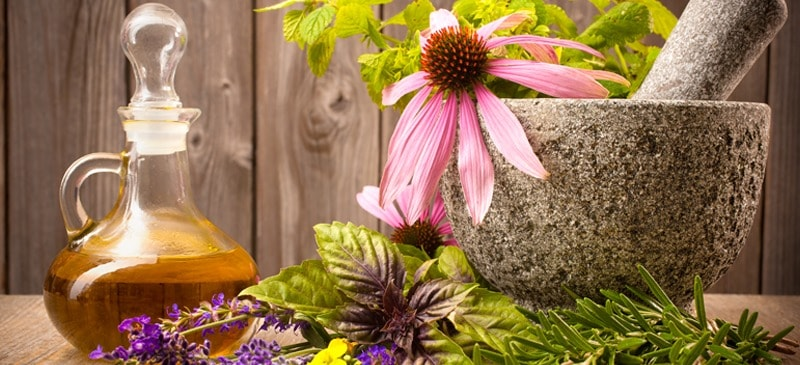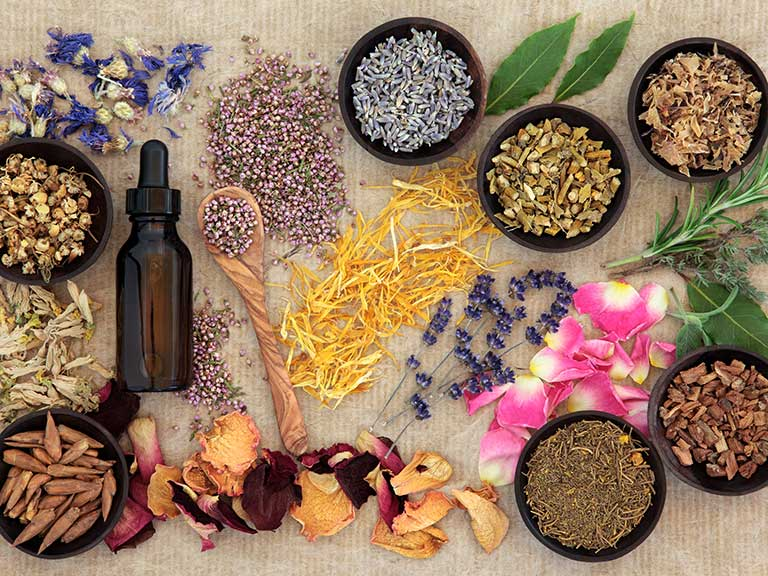Phytotherapy is the oldest method of treating various diseases, predating pharmacology. Nowadays, it has gained many supporters who believe that herbal remedies are safer than chemical-based medicines.
In this article, we will explore the place of herbal medicine in modern healthcare and whether it is a viable treatment option.
The History of Phytotherapy

Pharmacology, a relatively young science, originated in the mid-19th century. Before that, people relied on plants for their medicinal properties.
Archaeologists have found evidence of plant-based medicines dating back to ancient civilisations such as the Babylonians and Assyrians (6000 BC).
One of the most renowned pieces of pharmacological evidence is the Ebers Papyrus, dating back to the second millennium BC.
This historical document contains numerous herbal recipes for treating a wide array of diseases, listing several hundred plants.
As scientific understanding advanced, the isolation and synthesis of active compounds from plants led to the development of targeted drugs.
This evolution paved the way for the creation of pharmaceuticals with standardised doses and predictable effects, offering a new level of precision in treatment.
Despite these advancements, the wisdom of ancient phytotherapy continues to influence modern medicine.
Today, herbal medicines are experiencing a resurgence in popularity. Elderberry extract is now utilised to treat colds and flu, mints are prescribed for soothing sore throats, ginger is recommended for enhancing digestion, and medical marijuanas in Australia are actively employed in treating mental and nervous disorders.
Herbal Treatment Methods
Phytotherapy encompasses various methods of application, including the following:
- Ingestion (usually through drinking): There are many drinking herbal remedies for almost any occasion.
- External applications (hot poultices, cold compresses, ointments): These are employed to treat dermatological issues, fungal diseases, and injuries.
- Inhalations: They are utilised to address respiratory problems, facilitate sputum discharge, and relieve bronchospasm.
- Douching: Primarily intended for women suffering from gynaecological conditions.
- Microclysters: Although not meant for cleansing purposes, they serve as medical procedures and offer relief from inflammation of the rectal mucous membrane, dysbacteriosis, and haemorrhoids.
Injections and intravenous infusions are not practised in herbal medicine, as they are considered unsafe and not aligned with natural treatment concepts.
Types of Herbal Remedies

There are thousands of recipes, so herbal medicines come in various forms. The most popular ones are the following:
- Decoction: This method uses robust raw materials such as roots, bark, and occasionally branches that are simmered in a water bath for at least half an hour. Afterwards, the decoction must be cooled, strained, and used within two days if kept in an airtight container.
- Infusion: Boiled water, at a temperature depending on the recipe, is poured over soft raw materials, such as leaves, stems, buds, and flowers. The infusion is left to steep at room temperature for about four hours. It is advisable to consume it within a day.
- Herbal tea: This involves pouring dried raw materials with boiling water, similar to preparing tea. The herbal tea is meant to be consumed at one time.
- Alcohol tincture: In this method, vegetable raw materials are mixed with alcohol and placed in a dark location for a month. The resulting mixture is used in small doses and can be stored for an extended period due to its alcohol base.
- Ointment: Vegetable raw materials are crushed and combined with a fatty base, such as oils. The mixture is then boiled over low heat to create an ointment.
- Extract: Active substances are obtained through water-glycerin or oil maceration methods.
Each preparation method extracts different active substances from the plants.
Active Substances in Herbal Medicines
Plants contain myriads of valuable substances, including the following:
- Alkaloids. They act on the central nervous and cardiovascular systems and may help regulate blood pressure.
- Tannins. They have anti-inflammatory and hemostatic properties.
- Cannabinoids. They act on the central nervous system, can improve mood, and stimulate the brain.
- Cardiotonic glycosides. They are useful for the heart, can improve blood flow, and normalise pulse and rhythm.
- Saponins. They may help reduce cholesterol levels, facilitate sputum discharge, and act as laxatives and diuretics.
- Polysaccharides. They can help relieve irritation of the respiratory and digestive tract.
- Fatty oils. When taken orally, they may thin the blood, normalise the stool, and protect the liver.
They contain essential oils, resins, vitamins and minerals. The main thing is to know in which plant which substances are present.
Uses of Herbal Remedies
Herbal medicines are prescribed based on thorough examination and accurate diagnosis. They can be used to treat various conditions, including:
- Central nervous system disorders
- Immune system dysfunction
- Thyroid gland conditions
- Lymphatic system issues
- Respiratory conditions affecting the bronchopulmonary system
- Cardiovascular conditions
- Genitourinary system ailments
- Skin disorders and external injuries like burns, cuts, bites, and more
- Vitamin and mineral imbalance.
Advantages of Herbal Medicine
Advocates of herbal medicine cite numerous reasons for favouring non-traditional pharmacology. The foremost consideration is safety.
Many individuals harbour reservations about the chemical industry and, as a result, they gravitate toward herbal remedies due to their perceived advantages:
- Non-toxic nature;
- Minimum side effects;
- Additional support for the immune system.
These reasons hold some merit. While young children and pregnant women should not consume conventional medications, they are not invulnerable to illnesses, so alternative medicines can be beneficial.
Furthermore, phytotherapy’s accessibility is often highlighted. Raw materials are cost-effective, and with specialised knowledge, individuals can even extract herbs themselves.
Simultaneously, certain herbs can positively affect multiple organs, offering comprehensive benefits.
Disadvantages of Herbal Medicines
Herbal medications, when prepared properly, can indeed offer help for various diseases. However, this advantage is accompanied by a significant drawback.
The strong belief in the healing power of nature sometimes leads people to disregard conventional therapy methods completely.
It is essential to recognise that not all diseases can be effectively treated with herbs alone. Herbal remedies cannot replace antibiotics and antitumor drugs or address issues like dental caries and parasite infestations.
Doctors emphasise that using homemade herbal medicines can result in adverse reactions, such as:
- Allergies to specific ingredients;
- Unpredictable reactions to combinations of plants;
- Overdosing due to incorrect dosage calculations;
- Poisoning from mistakenly identifying poisonous plants as medicinal ones;
- Aggravation of existing conditions.
Phytotherapy necessitates extensive knowledge – more than merely knowing which plant helps with which disease.
It is crucial to bear in mind that herbal usage can have implications for other organs and systems. Proper training and understanding of herbal interactions are imperative for a safe and effective herbal treatment.
Scientific Approach to Herbal Treatment
Although we are discussing alternative medicine, it is important to note that it is also based on a scientific approach.
Phytotherapists adhere to several key principles:
- Use small doses: Small doses aid in controlling body reactions, and they can be gradually increased if needed.
- Gradually complicate composition: Start with single-component formulations to monitor their effects. Introduce multi-component formulas over time as you become familiar with individual ingredients.
- Consider timing: Take tonic plants in the morning and invigorating ones in the evening to avoid disrupting sleep patterns. Infusions and decoctions with diuretic effects should be consumed in the morning to prevent disturbances during the night.
- Combine herbs carefully: Herbs should be choosed cautiously to avoid harming other organs.
The primary principle is that phytotherapy should be secondary to conventional medicine. The primary treatment plan should include reliable and scientifically proven medications used under a doctor’s supervision.
The right combination of traditional and herbal treatments can offer comprehensive healthcare solutions and promote well-being.

Jean Smith is a fitness enthusiast and blogger who focuses on fitness and a healthy lifestyle. She is passionate about assisting people in living healthier lifestyles and is constantly on the lookout for new and creative methods to stay fit and healthy. Her articles are excellent resources for anyone interested in improving their health and fitness.
